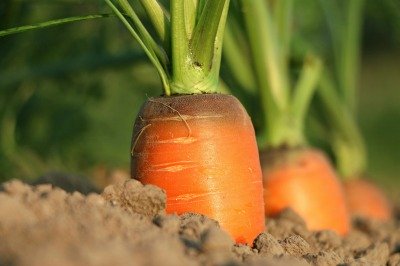Below is a partial list of vegetables (or vegetable crops) with edible botanical roots.
The scientific names, family, and other relevant information are likewise supplied.
This is Page 1 of five web pages providing the list of vegetables.
This page provides some examples of vegetable crops having a vegetative part (roots) that is used in the preparation of “vegetable” dishes or recipes.
Those with other edible vegetative parts (stems and leaves) and reproductive parts (flowers, fruits, and seeds) are treated on other separate pages.

Some plant species which are largely grown as agronomic crops are given as examples merely to provide information that they are also utilized as food crops with edible parts that are used in culinary preparation.
If such is the case, additional information is reflected in the fourth column.
Click here to read root crops vs. tuber crops vs. corm crops
With few exceptions, the botany of modified underground organs was confirmed by Kawakami (1978) and the family names from Simpson (2010).
Major families with two or more crop examples are color-coded for ease in compiling a list of vegetables under the same families.
For definitions of the types of vegetables, click here.
List of Vegetables (Vegetable Crops)
Table LV-1. List of vegetables (vegetable crops) in which the edible part of the plant body consists mainly of the root.
| Crop Name | SCI. Name | Family | Collective Name for Members of the Family, Other Info |
| Arrowroot, uraro | Maranta arundinacea | Araceae | Arum family; the botanical name of the underground storage organ is tuberous root (Kawakami 1978); generally classified under starchy Root and Tuber Crops (agronomic crop) |
| Beet | Beta vulgaris | Amaranthaceae | Amaranth family, including Chenopodiaceae; the botanical name of the underground storage organ is fleshy root (Kawakami 1978) |
| Cassava, tapioca, manioc | Manihot esculenta | Euphorbiaceae | Spurge family; the botanical name of the underground storage organ is the tuberous root; young leaves are also eaten cooked; generally classified under starchy Root and Tuber Crops (agronomic crop) |
| Carrot | Daucus carota | Apiaceae/Umbelliferae | Carrot family; fleshy root |
| Parsnip | Pastinaca sativa | Apiaceae/Umbelliferae | Carrot family; fleshy root |
| Raddish | Raphanus sativus | Brassicaceae/Cruciferae | Mustard family, also called Cole Crops and Crucifers; fleshy root |
| Rutabaga, swede | Brassica napus | Brassicaceae/Cruciferae | Mustard family, also called Cole Crops and Crucifers; fleshy root |
| Salsify, Oyster plant, Vegetable oyster | Tragopogon porrifolius | Asteraceae/Compositae | Sunflower or Aster family |
| Scorzonera, Black salsify | Scorzonera hispanica | Asteraceae/Compositae | Sunflower or Aster family |
| Sweet potato, camote | Ipomoea batatas | Convolvulaceae | Morning Glory/Bindweed family; tuberous root; young leaves and stems (camote tops) are also eaten cooked or blanched; generally classified under starchy Root and Tuber Crops (agronomic crop) |
| Turnip | Brassica rapa | Brassicaceae/Cruciferae | Mustard family, also called Cole Crops and Crucifers; tuberous root |
| Yam bean, singkamas | Pachyrrhizus erosus | Fabaceae/Leguminosae | Bean/Pea family, also called Legumes; tuberous root; the enlarged root is mainly consumed raw like a dessert fruit; young pods (fruits) are also eaten cooked |
REFERENCES
- HILL A. 1972. Economic Botany. 2nd ed. New Delhi: Tata McGraw-Hill Publishing Co. Ltd. 560 p.
- KAWAKAMI K. 1978. Physiology of yield of underground storage organs. In: Gupta US, ed. Crop Physiology. New Delhi: Oxford & IBH Publishing Co. p. 269-309.
- PEEL L. 2004. HarperCollins Practical Gardener: Kitchen Garden. New York, NY: HarperCollins Publishers Inc. 176 p.
- SIMPSON MG. 2010. Plant Systematics. 2nd ed. San Diego, CA: Elsevier Inc. 740 p.
- The Essential Gardening Encyclopedia. 2003. San Francisco, CA: Fog City Press. 608 p.
